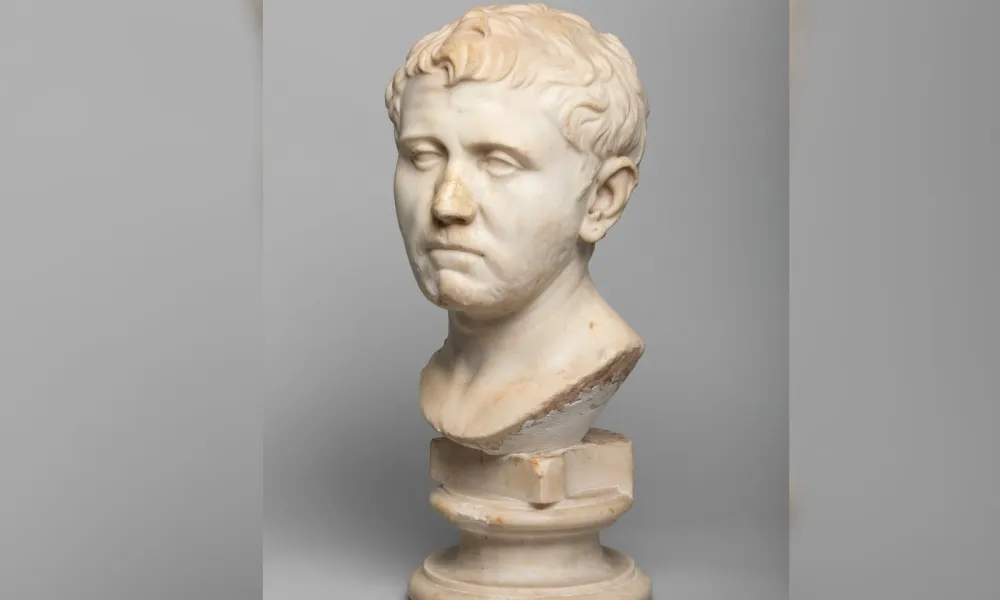News
Sculpture bought at Texas Goodwill for $34.99 was actually a missing Roman bust

Laura Young, who is a Texas antiques dealer, bought a statue at a Goodwill store in 2018 for just under $35. Young said she initially suspected she had come across something “very special,” she was surprised to learn that the piece would turn out to be a priceless Roman bust dating back to 2,000 years.
Young’s first thoughts was: “He looked Roman. He looked old.” And once she purchased the statue, she told the San Antonio Express-News, “in the sunlight, it looked like something that could be very, very special.”
It had taken years to determine the authenticity of the bust. However, after consulting several experts, Young was able to notify the German government of the finding and decided to return it to the Bavarian Administration of State-owned Palaces, the newspaper reported.
Firstly, Young said she wanted it to be put on display in her home state and an agreement was eventually made to allow the sculpture to be put on exhibit at the San Antonio Museum of Art.
“I babysat this artifact for nearly four years. I’m so excited for other people to know about him and see him,” Young, an Austin antiques collector, told the American-Statesman on Friday.
The bust was sculpted sometime between the late first century B.C. and early first century A.D. The bust was part of the collection of a German king, and it had ended up in a replica of a Roman villa-turned-museum in the German town of Aschaffenburg in the mid-1800s, according to the San Antonio museum. It was transferred to a storage facility just in time to miss the villa’s partial destruction in bombing during World War II.
It’s not known how the bust got to Texas, and the last time it was heard of was in a 1950s note saying it was stolen, according to Lynley McAlpine, who is a postdoctoral curatorial fellow at the San Antonio Museum.
“Then in the fall of 2018, a flow of emails came in,” McAlpine said. “There was a flurry of excitement.”
Pompey the Great had fought against Julius Caesar and was assassinated after his army was defeated and he fled to Egypt. Pompey had taken up his father’s fight against Caesar’s forces and was eventually captured and executed without trial, on Mark Antony’s orders, according to the British Museum.
If the bust does portray Sextus Pompey, “it’s a portrait of an outlaw, a sort of enemy of the state,” McAlpine told the newspaper. “It’s unusual to have something like this. It’s also interesting that someone preserved it and had it in their collection as a personal enemy to the emperor. That could be dangerous to display something like that.”
The New York Times reported that the bust could also have been made in the likeness of Nero Claudius Drusus Germanicus, a Roman commander whose forces had at one time occupied German territory.
-

 Executive3 days ago
Executive3 days agoFBI Raided Secret Service Agent’s Home in Tax Fraud Probe
-

 Executive5 days ago
Executive5 days agoWaste of the Day: Superintendent Resigns, Nets Over $900K
-

 Civilization4 days ago
Civilization4 days agoWork, Welfare, and the Illusion of a New Eden
-

 Civilization4 days ago
Civilization4 days agoTrump National Security Strategy Mirrors Trump World
-

 Executive4 days ago
Executive4 days agoWaste of the Day: Christmas Arrives in September for Federal Buildings
-

 Civilization2 days ago
Civilization2 days agoHow Illegal Immigration and Government Failure Fuel Identity Theft
-

 Executive3 days ago
Executive3 days agoAmerica’s Energy Economy: Why Natural Gas and Nuclear Still Matter
-

 Executive2 days ago
Executive2 days agoWaste of the Day: Austin Funds Allegedly Sent to Fake Companies

